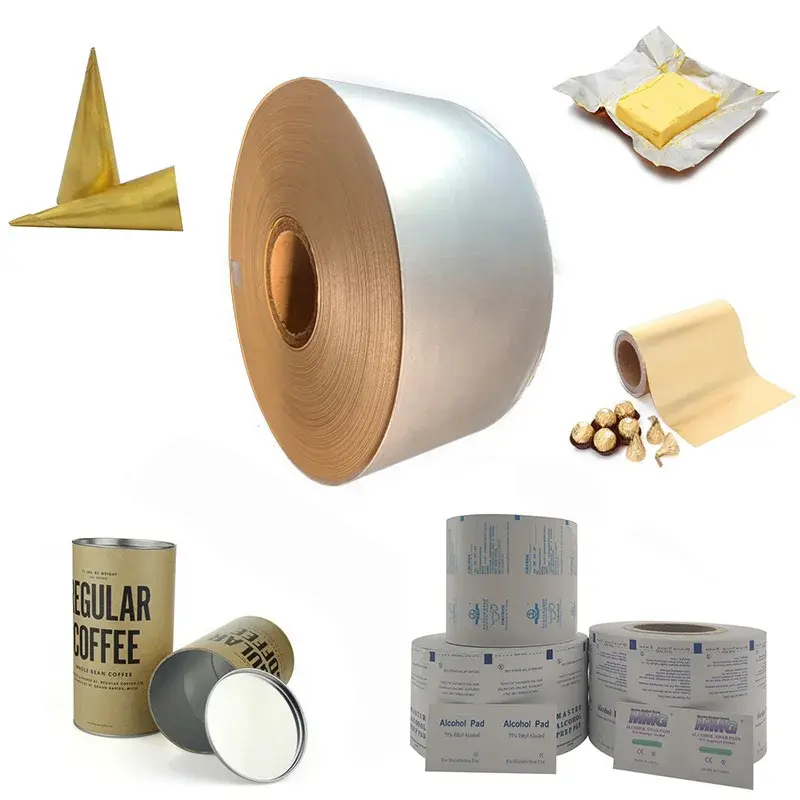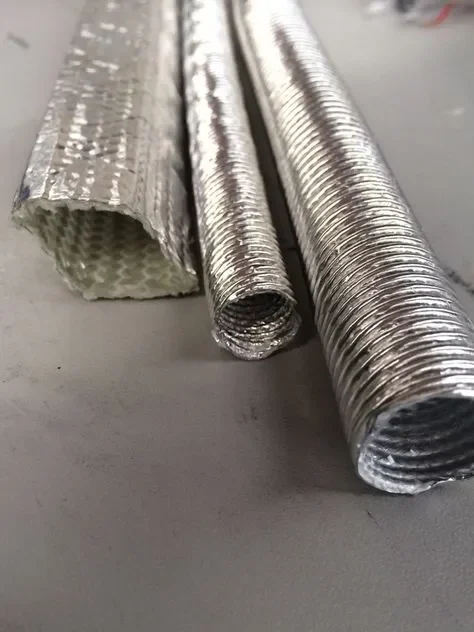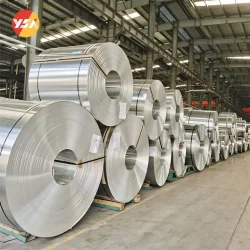
Laminating foil, it was first proposed as a packaging material for butter at the World Dairy Congress in Berlin in 1937. The results of the study showed that aluminum foil could extend the freshness of butter by two to three months compared to previously used materials.
1960s, Laminating Foil which is thin aluminum foil combined with paper and PE making aseptic carton laminates (TetraBrik). Originally conceived for ultra-high-temperature sterilized milk, the foil-laminated carton is now suitable for applications such as juices, soups, yogurt drinks, etc. Another success story of the 1960s is the foil-laminated tube made of plastic/paper/aluminum foil, which conquered the market for commodities such as toothpaste, beauty creams and ointments.

Today, the unique barrier properties of laminating foil to create lightweight packages with excellent preservation properties, which play an important role in their use in many exciting new and expanding markets. From pouches used to hold everything from pet food to beverages; lidding applications; innovative solutions for pharmaceutical technology; the acceptance of aluminum foil as a microwave safe material continues to grow.
Laminating Foil
Laminating Foil using PE (polyethylene) or paper. These are the two most common materials that can be laminated with aluminum foil.
1.PE
Aluminum foil can be laminated with a layer of polyethylene (PE) to create a barrier material that combines the properties of both materials. PE provides additional strength, flexibility, and moisture resistance to the foil. The PE layer can also provide a heat-sealable surface, allowing the foil to be easily sealed to create a protective enclosure.
2. Paper

Aluminum foil can also be laminated with paper to create a composite material that combines the strength and rigidity of paper with the barrier properties of the foil. This combination is often used in packaging applications, where the paper provides structural support and printing surface, while the foil acts as a moisture barrier and protects the contents from light and oxygen.
The lamination process involves bonding the aluminum foil with the desired material using adhesives or heat sealing techniques. The resulting laminate structure can have a wide range of applications, such as food packaging, insulation, and pharmaceutical packaging, among others.
Besides PE and paper, Laminating Foil has various other materials to create composite structures.
3. Plastic films
Aluminum foil can be laminated with various plastic films such as PET (polyethylene terephthalate), PVC (polyvinyl chloride), PP (polypropylene), and nylon. These films can provide additional strength, barrier properties, and flexibility to the foil.
4. Foam

Laminating aluminum foil with foam materials such as polyethylene foam or polyurethane foam can create insulation materials with enhanced thermal and sound insulation properties. The foam layer provides insulation while the foil acts as a radiant barrier.
5. Fiberglass
Laminating aluminum foil with fiberglass fabric or matting can create a composite material that combines the strength and heat resistance of fiberglass with the barrier properties of the foil. This type of laminate is commonly used for insulation in applications such as HVAC systems and aerospace industry.
6. Metals
Aluminum foil can also be laminated with other metals such as copper, stainless steel, or tin. These laminates can provide specific properties such as electrical conductivity, corrosion resistance, or enhanced barrier properties.
What are three physical properties of aluminum foil?
Electrical Conductivity
Aluminum foil is an excellent conductor of electricity. The high electrical conductivity means it allows electric current to flow easily through its surface. This property makes aluminum foil widely used in electrical applications such as wiring, electrical cables, and electronic components.
Thermal conductivity
Aluminum foil has a relatively high thermal conductivity compared to many other materials, which means it can effectively transfer heat. When heat is applied to aluminum foil, it quickly conducts the heat across its surface, distributing it evenly. This makes aluminum foil a popular choice for effective heat transfer medium., including insulation, heat exchangers, and cooking.
For example, aluminum foil is often used to wrap food items to keep them warm or to insulate pipes and ducts in HVAC systems.
While aluminum foil has good thermal conductivity, it can also be used as a thermal insulator when combined with other materials. Laminating Foil, Foil-faced insulation materials, which have a layer of aluminum foil bonded to an insulating material such as foam or fiberglass, are commonly used to enhance thermal insulation in buildings and appliances.
The high thermal conductivity of aluminum foil also allows it to effectively dissipate heat. In electronic devices, aluminum foil is often used to create heat sinks that draw heat away from sensitive components, preventing overheating.
Factors Affecting Conductivity
The conductivity of aluminum foil can be influenced by many factors. The thickness of the foil is one such factor, as thicker foils may have lower conductivity compared to thinner ones. Additionally, the purity of the aluminum used in the foil can affect its conductivity. Higher purity aluminum typically exhibits better conductivity.
The high conductivity of aluminum foil makes it suitable for several practical applications. In the realm of electrical engineering, it is used in capacitors, transformers, and printed circuit boards. In the food industry, aluminum foil is widely employed for wrapping and cooking due to its excellent heat conduction properties.
The conductivity of aluminum foil makes it a versatile material in various industries that require efficient electrical and thermal conduction. Its ability to conduct electricity and heat quickly and effectively contributes to its widespread use in numerous applications.
Ductility
Aluminum foil is highly ductile, meaning it can be stretched and formed into various shapes without breaking. It is also highly plastic and malleable, allowing it to be easily bent, folded, or creased without cracking. The thinness and flexibility of aluminum foil make it ideal for packaging and cooking. It can be shaped at both cold and hot temperatures and provides a protective barrier for freshness and contamination prevention. Aluminum foil is lightweight, easy to handle, and recyclable, making it a versatile material for various applications.
Other physical properties
Other properties such as density, melting point, thermal expansion, elasticity modulus, resistivity, strength and hardness are also important physical properties of aluminum foils.
- Density (g/cm3)
The density of aluminum foil is approximately 2.7 g/cm3. This means that for every cubic centimeter of aluminum foil, it has a mass of 2.7 grams.
- Melting Point (°C)
Aluminum foil has a melting point of around 660°C. This is the temperature at which solid aluminum foil changes into a liquid state.
- Thermal Expansion (1/°C)
The thermal expansion coefficient of aluminum foil is about 23.1 x 10-6 per degree Celsius. This means that for every degree Celsius increase in temperature, aluminum foil expands by 23.1 parts per million in length.
- Elastic Modulus (GPa)
The elastic modulus of aluminum foil is approximately 70 GPa. This value represents the stiffness or rigidity of the material.
- Resistivity (Ω·m)
Aluminum foil has a resistivity of about 2.65 x 10-8 Ω·m. This low resistivity makes it a good conductor of electricity.
- Strength
The strength of aluminum foil can vary depending on its thickness and alloy composition. Generally, it has a tensile strength ranging from 70 MPa to 160 MPa, which measures its ability to withstand pulling or stretching forces.
- Hardness
Aluminum foil has a relatively low hardness on the Mohs scale, typically ranging from 1 to 2. This means it is relatively soft and can be easily scratched or deformed.

